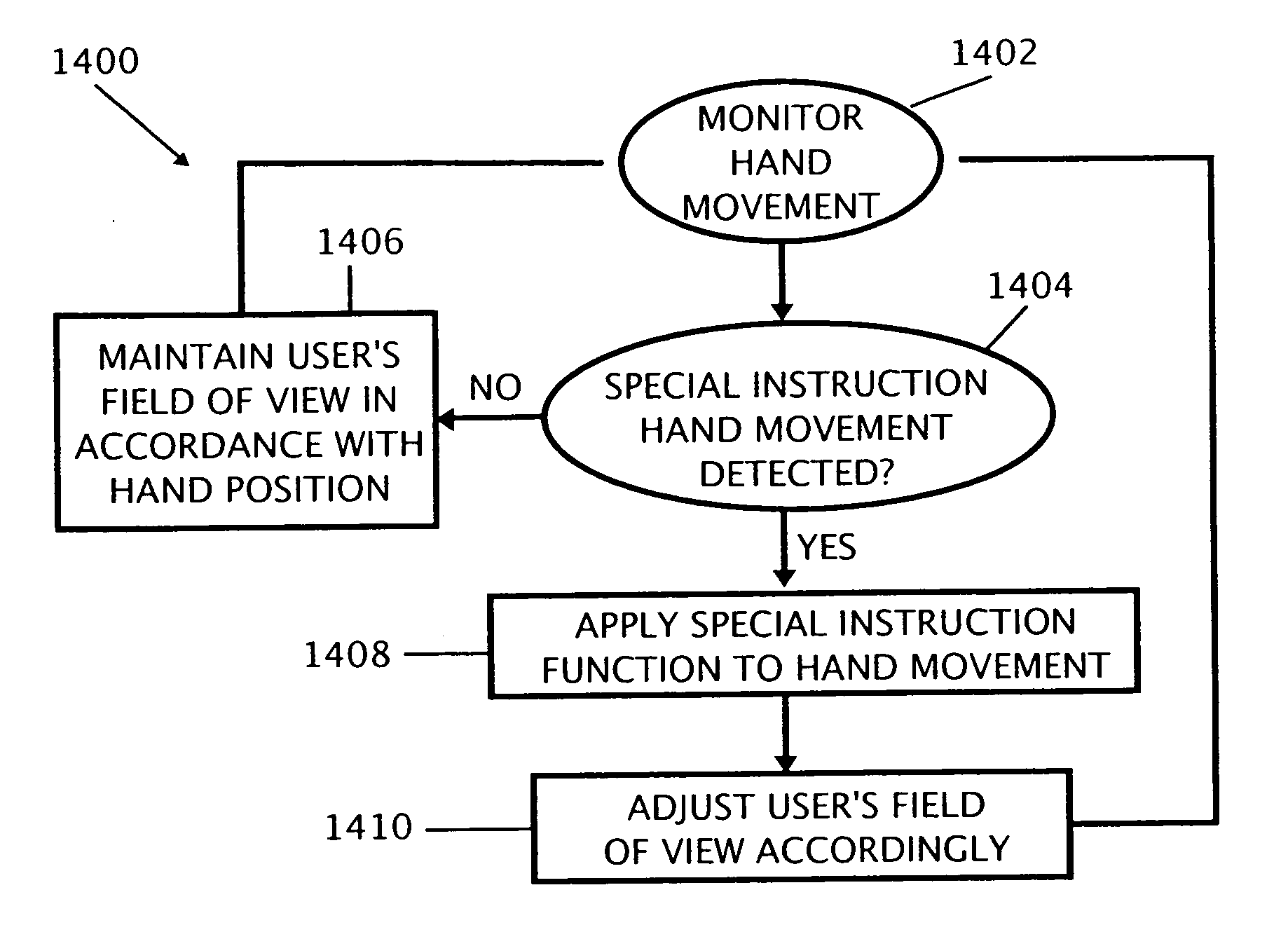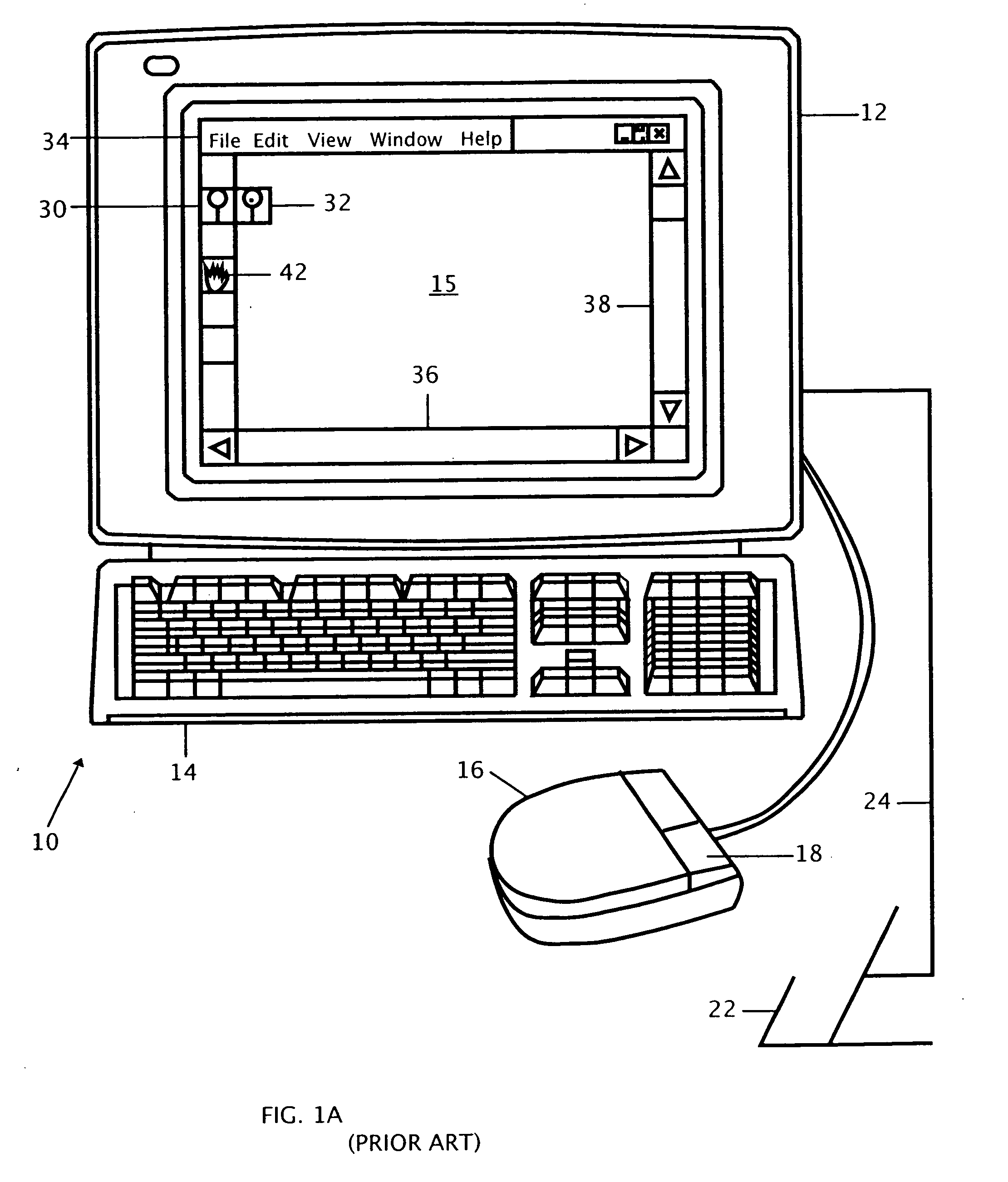Often, part of the display area is further allocated to menus and the like, further limiting the viewing area for a 2-D object such as a FAX page, however this problem has been partially addressed.
The displays on hand-held devices are getting more complicated.
The benefits of these portable hand-held devices, which includes their size, portability, and reasonably low cost, also limits these devices' ability to display rich graphic content due to the limits of screen size and memory.
The increasingly
graphics-rich Internet does not presently account for the fact that hand-held wireless devices are usually connected to
the Internet at a much lower bandwidth and significantly less data transfer speed than an ordinary
personal computer would be able to
handle.
Such normal computers, which may be just a couple of years old are often unable to display some of the more complicated displays, indicating that such graphic display requirements would be unacceptable for an affordable small electronic device.
Another significant problem with displaying complicated
graphics on a hand-held
electronics screen is that a PDA screen which is typically 2.5×2.5, has 94 percent less area than a 12×9 standard 15 inch
computer monitor.
Of course the
graphics can simply be reduced by a factor of 16 but such a reduction in graphics size is usually unacceptable because text ceases to be readable and icons are not distinguishable. FIG. 3A illustrates a the resulting reduction in
display size that would occur on a PDA screen.
Another problem is that most hand-held electronic devices do not have the same screen ratio as a standard computer display.
This means that the Palm is more compact but cannot display graphics the same way a normal computer display will show them, even when scaled properly.
A Palm has 160×160 screen (different models may vary) so the resolution will be a little better than a standard computer
display resolution, but very limited because of the human
perception of gray or two-
tone scale.
There are some severe inherent limitations to the concept of browsing with a cellphone.
It is simply not practical to design web pages for devices this small.
Furthermore, many cellphone browsers cannot be upgraded and many phones have been sold with obsolete browser versions, and these phones will be in use for many years to come.
However, the cost of Internet sites is in their development and implementation.
Often
accessibility for alternate wireless devices such as PDAs and cellphone browsers can be a problem on the web.
Although such pages provide a solution to the data transfer and the graphics problem, many entities do not consider developing a separate web clipping page (although they might as they cost less than $100 to develop) for hand-held and such pages can provide only the most basic information, usually in a text format.
JAVA is not particularly useful for web clipping because
JAVA a great deal of computing power, although
JAVA is often used.
Icons can be particularly troublesome, because even small icons can take up a significant amount of memory on the data transfer.
As stated above, many entities simply cannot afford the resources to make extra Internet sites for hand-held users or to develop the proper tools.
The problem with color on a hand-held display is that such hand-held devices usually have only 8-16 MB on memory at the maximum and such color displays would take up a huge amount of the allocated bandwidth in a transfer of data.
While this process would be convenient for people who have a few number correlated to Internet sites memorized or stored in memory, it is not very convenient for persons who are trying to look for unknown Internet sites.
Another negative aspect of wireless browsing is the amount that data transfer costs.
One negative aspect of the Palm wireless devices is that Palm
Wireless, the division that supports the wireless services to the wireless hand-held devices, charges by the amount of data that is transferred.
The price of the transfer of data to wireless devices may come down as the devices become more prevalent and competitors start offering services.
The physical act of navigating on a wireless device is also a challenge.
The problem with most of the PDA display scroll bar is that in order to maximize
screen space, the scroll bar are one or two pixels wide and quite difficult to navigate with the pen 26.
The use of the touch pen is more is more ergonomically cumbersome than the one handed use of a PC mouse used to navigate.
For example, using the Palm as a newspaper constantly requires a user to scroll down because of the limited screen size.
Furthermore, navigation on a
cell phone browser can be difficult because the small direction keys located on the keypad are difficult.
Also the combination problem of “clicking” links and
scrolling at the same time on the
cell phone present
usability problems for the user.
Rich wireless content, however, does not have the PDA or cellphone in mind, and therefore the display limitations and potential solutions are especially relevant when considering content that is not specifically designed for the portable device.
Current solutions to hand-held displays of wireless content such as web clipping and cellphone microbrowsing are only appropriate for the most basic graphic displays and are not configured for control and browsing and navigating that is easy to use.
 Login to View More
Login to View More  Login to View More
Login to View More 


